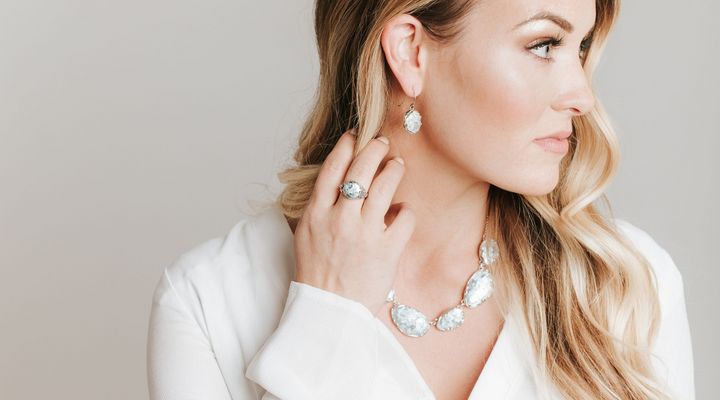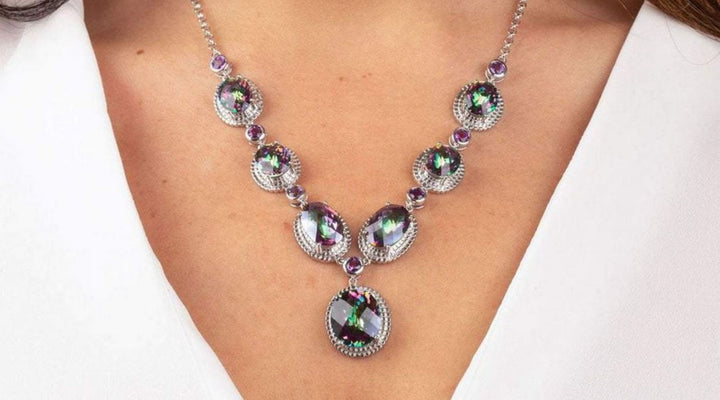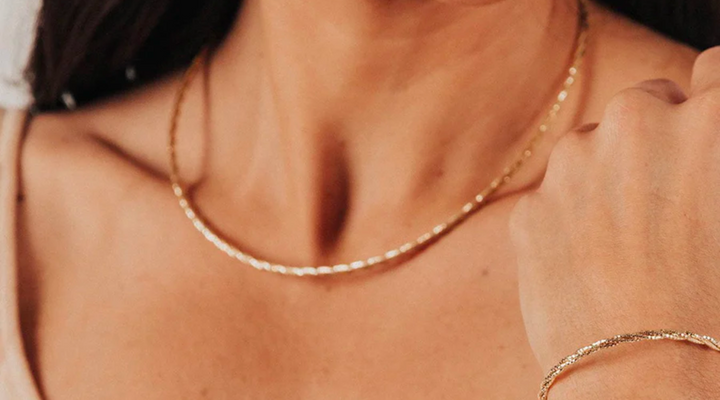Rings for Longevity: The Best Types of Stones for Rings
Posted by Deven Davis on

Rings for Longevity: The Best Types of Stones for Rings
Choosing the right types of stones for rings requires some insight into the hardness, meaning, and longevity of the types of stones you're considering.
Keyword(s): types of stones for rings
Rings are one of the most popular pieces of jewelry. Nearly everyone wears a ring at some point, whether to symbolize marriage or for personal style.
Moreover, rings are a highly personal jewelry piece. Lots of thought should go into choosing a ring for yourself or someone else.
With so many types of stones for rings, it's important to learn about the durability, longevity, and meaning behind each one.
Unsure of what this all means and don't know where to start? Read on to get a deeper understanding of gemstones so that you can confidently buy your next ring.
What Determines a Stone's Longevity?
Many factors play into a specific stone's longevity. These factors will determine the price of the ring as well as the life span of the jewelry.
The Moh's Scale of Hardness
The Moh's Scale ranks gemstone hardness from 1 (soft) to 10 (hard). A diamond, for example, is the hardest gemstone, so it ranks as a 10.
The hardness of a stone is a big factor in determining its durability. The harder a stone is, the less its susceptible to scratches and other damage.
For rings you plan to wear every day, it's best to get a hard stone so that it is less prone to wear and tear.
Refractive Index
The refractive index gives insight into the brilliance of the stone. In short, it is the number of times light is reflected in the stone.
If you want your ring to be bright and reflective, you will, in most cases, want a stone with a high RI.
The Famous 4 Cs of Gemstones
Everyone has heard of the 4Cs when it comes to buying diamonds, but the same principles apply to all gemstones.
- Cut: When talking about stone cuts for rings, referencing the reflective qualities and dimensions of the stone, not the shape of the gem
- Clarity: Is the gem clear and free of any blemishes?
- Carat: Carats refer to the stone's weight
- Color: Know that some types of stones come in multiple colors and not just the obvious ones
Now that you know some of the technical terms when talking about gemstones for rings, now it's time to look at some examples of popular gemstones.
9 Types of Stones for Rings
There are many gemstones to choose from when picking out a ring. Each stone holds a different meaning, and some gems are more durable than others. Here are 9 common types of stones for rings:
1. Diamond
The Diamond is classic, hence why many choose diamonds for engagement or wedding rings. Diamonds are the hardest gemstone, making them extremely durable and long-lasting.
2. Emerald
Emerald gemstones are packed with meaning;they symbolize successful love and the rebirthing that comes in springtime. They are also the birthstone for the month of May.
Emerald gemstones are slightly softer than diamonds, so rings with the stone should be taken off before any activities that could cause scratches.
3. Ruby
The deep, luscious red of the Ruby gemstone symbolizes passion. Additionally, Ruby is the birthstone of July.
As for its durability, it rates around a 9, meaning that its hardness is near a diamond. It's safe to wear daily.
4. Sapphire
The sapphire stone is typically a deep, rich blue color but can also come in other colors like pink and violet. It is the birthstone for September and signifies wisdom.
Similar to Rubies, it is a hard stone and extremely durable.
5. Tanzanite
The tanzanite stone is rare as it is only found in Tanzania. Tanzanite stones range in color;some hold more purple hues while others are bluer. No matter the tone, the beautiful stone, many believe the stone has calming qualities.
The December birthstone is softer, as it around a 6 on the Mohs scale. Because of this, wearers should be careful when wearing the ring daily as it can be easily scratched.
6. Pearl
Pearls are timeless. Unlike all other gems, they are created in a living creature. The pearl symbolizes purity and is the birthstone for the month of June.
Pearls come in at a low 2.5 on the Moh's scale, meaning they are very soft. To protect pearl jewelry, users should store pieces away from other jewelry that could damage the pearls. More so, pearls aren't mean to be an everyday jewelry piece but rather saved for special occasions.
7. Morganite
The Morganite stone ranges from pale pink to peach tones, making it great to pair with a rose gold or silver band.
Morganite gemstones have grown in popularity over the years as a replacement for diamonds in engagement rings. In addition to the beautiful pink color, the stone is fit for everyday wear, falling at a 7.5-8 on the Moh's scale.
8. Amethyst
For purple lovers (and those born in February), amethyst is the perfect stone for a ring. Amethyst hues vary from lavender to darker purples.
As for its durability, the amethyst is like the emerald, as it can be worn daily if the user is careful.
9. Turquoise
The Turquoise gemstone is unique, as it is opaque in nature. The blue-green hue of turquoise has decorated jewelry for centuries.
However, turquoise ranks around a 5 on the Mohs scale, as it is a softer stone. Because of this, turquoise makes for great statement rings as opposed to rings worn every day.
Choosing the Best Gemstone for You
When choosing a gemstone for a ring, consider first how much the jewelry piece will be worn and what (if any) meaning do you want the piece to hold.
With so many types of stones for rings to choose from, there is bound to be a perfect gemstone that fits your needs and personal style.
Want to start shopping? Check out the collection of rings available online at Roma Designer Jewelry.










